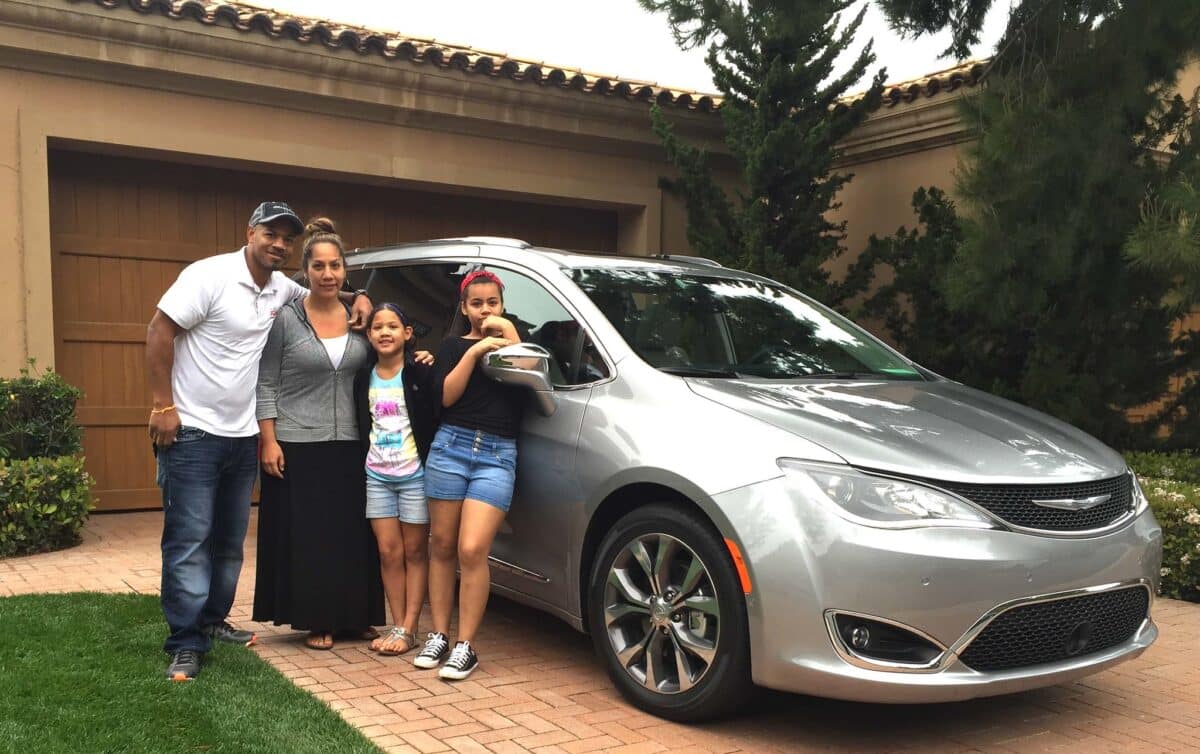
Photo: Automotive Rhythms via Creative Commons 2.0
Are you considering selling your extra vehicles and downsizing to becoming a one-vehicle family? Ever since the lockdown occurred in 2020 and many jobs shifted to fully remote positions, many families have reconsidered the necessity of owning multiple vehicles. Why pay money for an extra car that idles at home most of the time?
Here are some ways you can make this transition smoother when you’re ready to sell your unused vehicles and start sharing one car among your household.
Do You Know the Consequences of Not Driving Your Car Regularly? Be aware of these potential issues…
- You live in an area with a thriving public transportation infrastructure
- One of your vehicles sits unused in your driveway for 75-90% of the week
- One or more household members have work-from-home jobs.
- You don’t have any children that are of legal driving age
- You already have a support system by living near family members or close friends
- You want to save money on car insurance, car payments, and vehicle maintenance
- You need quick cash for paying a big bill or kickstarting your savings, which could get from selling a car
- You have only enough space to park one vehicle, such as a single-car garage or paid carport at your apartment.
- You would rather use your garage for other purposes and don’t have enough driveway space for jockeying multiple vehicles around.
Not Sure How to Sell Your Car? Follow this guide of 5 easy steps!
When you downsize to only one vehicle, don’t let it be a sports coupe or compact sedan with limited utility. Choose a type of vehicle that is capable, spacious, and adaptable for a variety of functions. For many people, this is a full-size SUV or minivan that seats 6-8 people or can fold seats flat to transport long cargo like lumber.
Succeeding in sharing one vehicle among multiple people requires communication! Have a shared calendar where everyone can claim and view anticipated vehicle usage. Know each other’s recurring obligations, and give your partner plenty of advanced notice if something unexpected pops up. If someone is relying on the vehicle too often and hogging it, be bold and have a conversation with them to fix the situation.
Succeeding as a one-car family requires a support network. Have a plan established for who you can call for a ride when something happens. This could be nearby family members, close friends, colleagues, or even neighbors. If you don’t have any of these where you live, join a rideshare program.
If one of you still works an in-person job at an office, hospital, or service industry company, try to arrange a carpool routine with a coworker who is willing to pick you up and drop you off. Why take your family’s only car if it’s just going to sit in the parking lot all day? Leave the car at home in case someone else needs it to run errands or attend an appointment.
Proactively begin forming relationships with your neighbors so they can help whenever you’re in a bind. Reach out and get to know them so you will eventually feel comfortable asking them for a ride in an emergency, to lend an ingredient you forgot for a recipe, or to drop your kid off at soccer practice. Of course, make sure you offer to reciprocate any favors fairly, such as babysitting their children or doing yard work for them.
There are other ways to get around town than just a car. Have a bicycle, e-bike, e-scooter, moped, or something similar that you can hop on and ride to the grocery store, a medical appointment, etc. Consider a longtail cargo bike that can hold your shopping bags or backpack when you run errands.
Some people like to use carshare programs, which allow members to borrow a vehicle for a short time and pay for its usage by the hour. This short-term rental service can cost you, but it’s more affordable than owning a second car if you only use it occasionally.
Speaking of running errands, you will need to become better at completing all of your weekly or biweekly errands in fewer outings. This requires planning ahead so you don’t have to find a way to buy a last-minute item. When you’re a one-vehicle family, you won’t have the freedom to hop in whenever you need to and drive 10 minutes to Walmart anymore.
Research all forms of municipal transit offered in your neighborhood, such as buses, subways, trains, and street cars. Download the corresponding transit app and load a transit pass with plenty of credits. Know all the stops closest to your home and their schedules (times and frequencies).
This will become your lifeline if you downsize to one shared vehicle, and it may require overcoming your anxiety of public transportation. Get the point of feeling confident following these systems so they’re second nature if you’re ever in an emergency.
Have your children take the bus to school instead of giving them curbside drop-off and pick-up every day. That’s one more duty you don’t have to coordinate when sharing a single vehicle among your whole family. Sure, your kids might not love waking up earlier to ride on a bus with rowdy students when they’re used to the luxury of being chauffeured; but, it’ll make scheduling much easier.
It’s far easier to share one vehicle when you’re all headed to the same destination. So, do more things together as a family rather than independently. This includes reconsidering your hobbies and attempting to align them. Otherwise, you’ll face conflict when you need to head in opposite directions at the same time — one is going to a dance studio while the other is going to the gym.
Consider taking dance lessons as a couple, participating in the same sport at the city rec center, or going to the same concerts together. Join his card-gaming league or join her community volunteer program. Also do this for your kids by signing them up for the same sports, music lessons, or youth groups at the same location.
Keeping your car running smoothly is crucial when it’s the only one you have. If that vehicle goes kaput, you’ll be in a terrible dilemma! So, you need to be extra-attentive to your car’s servicing needs. This includes oil changes, new brakes and tires, dashboard warning lights, and even washing and waxing frequently to protect from rust.
Rather than put all of this responsibility on one person, strategize how you can fairly divide the tasks. One person can be responsible for scheduling and attending service appointments (which may require sitting and waiting at the dealership instead of dropping it off), while the other person renews registration and insurance.
When you share a car with someone else, you’ll be adjusting the seat, mirrors, and media far more often than you used to. Once you’re done using the vehicle, politely return all settings back to what they had been for the other driver. While this isn’t necessarily a crucial habit, it will make your transition to being a one-vehicle family much smoother emotionally.
This includes the seat position, seat heating/ventilation setting, steering wheel position, rearview and side mirrors, music station and volume, and drive mode. Of course, if your vehicle has memory settings, this can happen automatically, so consider having this feature in your shared vehicle if you upgrade.
Have you downsized to only having one car shared among your household? What have you learned or done to make the transition to being a one-vehicle family a success? Share your experiences with us!
Aaron is unashamed to be a native Clevelander and the proud driver of a Hyundai Veloster Turbo (which recently replaced his 1995 Saturn SC-2). He gleefully utilizes his background in theater, literature, and communication to dramatically recite his own articles to nearby youth. Mr. Widmar happily resides in Dayton, Ohio with his magnificent wife, Vicki, but is often on the road with her exploring new destinations. Aaron has high aspirations for his writing career but often gets distracted pondering the profound nature of the human condition and forgets what he was writing… See more articles by Aaron.



